The Best Laptops
We’ve updated this guide with our new Windows ultrabook, MacBook, budget ultrabook, and 2-in-1 picks.
Smartphones and tablets may have taken over much of people’s screen time, but there’s still a need for a real computer sometimes—and for most people, that means a laptop. For school and office work and tasks like creating spreadsheets and editing video, there’s no good substitute for a decent keyboard and a big screen. But exactly which laptop you should get depends on how often you’ll use it, what you’ll use it for, and (of course) how much money you can afford to spend on it.
We regularly test the most promising laptops, from sleek ultrabooks to cheap Chromebooks to massive gaming laptops and beyond. Here are the best models you can buy in every category, along with advice on how to choose which type of laptop is right for you.
The research
- Mac or Windows (or something else)?
- For most people: The best ultrabook
- The best Mac laptop
- The best cheap ultrabook
- The best Chromebook
- The best budget Windows laptop
- The best Windows laptop for photo and video editing
- The best budget gaming laptop
- The best gaming laptop
- The best business laptop
- The best 2-in-1 laptop
- Footnotes
- Frequently Asked Questions
Mac or Windows (or something else)?
Many people already know whether they want a MacBook or a Windows laptop: If you’re already familiar with macOS or Windows, the easiest choice is to buy a computer that runs that operating system. That said, macOS and Windows have never been more similar, and most popular apps work just as well on either platform (or at least have alternatives that work similarly). If you’re interested in switching, it isn’t as big a deal as it used to be.1
If you’re not tied to a platform, the biggest factor is how easy it is to get support. Do most of your family and friends use Macs? Do you have an Apple Store nearby? Do your most tech-savvy friends use Windows? If you’re a student, does your school have a help desk? Will your company’s IT department provide support for your home computer? If you’re not a self-sufficient techie and want the best service for your computer, buy a Mac, because you can take it to any Apple Store to get it fixed. No other computer maker provides that level of support. (If you are self-sufficient, go with what you like.)
Alternatively, since more tasks can be accomplished in a browser, without your downloading and installing any apps, you might not even need a traditional operating system—a Chromebook may be all you need.
For most people: The best ultrabook
Our pick
Dell XPS 13 (9300)
The best ultrabook
The Dell XPS 13 is thin and light, and it has long battery life, a great keyboard, a reliable trackpad, and a spacious screen.
Recommended configuration
| Processor: | Intel Core i5-1035G1 | Screen: | 13.4-inch 1920×1200 non-touch |
| Memory: | 8 GB | Weight: | 2.65 pounds |
| Storage: | 256 GB SSD | Tested battery life: | 10.5 hours |
Who these are for: Ultrabooks are the best laptops for most people, including college students, writers, office workers, and commuters. They have great keyboards, screens, and battery life, they offer enough power to do everything most people need a computer for, and they’re thin, light, and portable. You should expect to pay between $900 and $1,300 for a great Windows ultrabook that will last you three to four years.
Where they fall short: Great ultrabooks can cost more than many people want to spend on a laptop, even if such models provide a better experience and last longer than cheaper alternatives. Ultrabooks also lack the processing power to play high-end games or do demanding tasks such as professional video editing or 3D modeling. If you need a cheaper laptop or a more powerful one, check out our other picks below.
Why we like this one: The Dell XPS 13 (9300) offers the best balance of what makes an ultrabook great: It’s exceptionally light and compact, its battery will last through a full day of work or classes, and it has a good keyboard and trackpad. It also offers fast performance and a spacious screen with a taller aspect ratio that’s ideal for Web browsing and document work. It has only two Thunderbolt 3/USB-C ports that you can use to transfer data, connect an external display, or charge the laptop. We wish the XPS 13 had a USB-A port, as well, but it does comes with a USB-C–to–A adapter, and if you need more ports you can get a USB-C hub or dock.
You can read more about the Dell XPS 13 and our other picks in our guide to Windows ultrabooks.
The best Mac laptop
Our pick
Apple MacBook Air (13-inch, 2020)
A well-balanced MacBook
Apple’s best MacBook Air in years has a comfortable keyboard, good performance, and a reasonable amount of storage—all things that weren’t true of the previous model.
Recommended configuration
| Processor: | quad-core Intel Core i5-1030NG7 | Screen: | 13.3-inch 2560×1600 IPS |
| Memory: | 8 GB | Weight: | 2.8 pounds |
| Storage: | 256 GB SSD | Tested battery life: | 8 hours |
Who these are for: If you prefer macOS or need great tech support, a MacBook is a safe bet; the 13-inch models usually offer the best combination of size, weight, and speed. They’re great for writers, office workers, commuters, and college students. Expect to pay around $1,100 for one with good enough specs and storage to last you three to four years.
Where they fall short: MacBooks are even more expensive than Windows ultrabooks, especially if you want to upgrade the memory or storage; Apple’s SSD upgrade prices are so high that we usually recommend looking into cloud storage or an external SSD instead. And as with Windows ultrabooks, our recommended MacBook configuration for most people lacks the processing power to play demanding games or do professional 3D modeling.
Why we like this one: The 2020 MacBook Air is Apple’s best laptop in years. Its performance is solid, its price is reasonable, and you don’t have to pay extra to get a usable amount of storage. And the new Air’s keyboard is actually good, since Apple traded out the shallow and failure-prone butterfly switches under the keys of its previous MacBook Air for springier and more satisfying scissor switches. Like Apple’s other laptops, the Air has only a small number of homogenous ports (in this case, two Thunderbolt 3/USB-C ports that may require the use of hubs or new cables). But the Air’s light weight, solid construction, and industry-leading support make it a great laptop, especially if you also own an iPhone or other Apple devices.
If you need a more powerful Mac with a larger screen, take a look at our full guide to MacBook models.
The best cheap ultrabook
Budget pick
Lenovo Yoga C740 (14″)
An excellent laptop for the price
The Yoga C740 is the best laptop you can get for the price. It offers performance similar to that of our top pick, but it’s larger and heavier, and it has shorter battery life.
Recommended configuration
| Processor: | Intel Core i5-10210U | Screen: | 14-inch 1920×1080 touch |
| Memory: | 8 GB | Weight: | 3.09 pounds |
| Storage: | 256 GB SSD | Tested battery life: | 9.5 hours |
Who these are for: Most Windows computers around $500 or less are large and heavy and saddled with poor battery life—among other flaws—but a bit more money can get you an ultrabook that’s almost as good as much more expensive options. Budget ultrabooks are ideal for students as well as for anyone who can spend around $800 on a laptop.
Where they fall short: Budget ultrabooks tend to have bigger, creakier bodies and worse build quality than our top picks, and they can also have less responsive keyboards and trackpads, dimmer and less accurate screens, or fewer ports. But if you can find one that makes as few of these compromises as possible, you may be able to save a few hundred dollars.
Why we like this one: The Lenovo Yoga C740 (14″) is a fantastic value. It costs a few hundred dollars less than our top ultrabook pick and has nearly identical specs. Compared with the XPS 13, the C740 is larger and heavier, it has shorter battery life, and its keyboard isn’t quite as enjoyable to type on. But it’s powerful and portable enough to use for a full day of work or classes. And unlike most cheap ultrabooks, the C740 is sturdy, has a fingerprint reader, and comes with a convenient and easily replaceable USB-C charger.
You can read more about the Yoga C740 and how well it compares to our other picks in our full guide.
The best Chromebook
Our pick
HP Chromebook x360 14
The best Chromebook
With solid performance, great battery life, and a 14-inch screen, the x360 14 is one of the best Chromebooks around.
Recommended configuration
| Processor: | Intel Core i3-8130U | Screen: | 14-inch 1920×1080 touch |
| Memory: | 8 GB | Weight: | 3.7 pounds |
| Storage: | 64 GB SSD | Tested battery life: | 13.5 hours |
Who these are for: Chromebooks are ideal for students and kids, but you should also consider one if you spend most of your computer time in a Web browser, if you’re on a tight budget, or if you already have a decent desktop PC. A good Chromebook can do almost anything a regular laptop can do—as long as it’s possible in a Web browser or in Android apps. And Chromebooks are cheap: A $400 Chromebook is faster, lighter, and sleeker than a $500 Windows laptop and blessed with better battery life. Plus, Chromebooks are secure and easy to maintain.
Where they fall short: Chromebooks can’t run iTunes, Photoshop, demanding games, or many of the programs you might be used to on your Mac or Windows computer. They don’t have much local storage, and they work best with a full-time Internet connection. But if you use Web-based email, if you can get by with Office 365, Google’s office Web apps, and Android app alternatives, and if you stream your music and movies over the Internet, a Chromebook should do just about everything you need it to.
Why we like this one: The HP Chromebook x360 14 has solid performance, a great keyboard and trackpad, all-day battery life, and both USB-C and USB-A ports to connect new and older peripherals. The x360 14 also offers a 360-degree hinge and a responsive 14-inch, 1920×1080 IPS touchscreen, though the machine is too heavy to use comfortably in tablet mode. It’s expensive for a Chromebook, but it’s worth the money if you plan to use your Chromebook a lot.
For more, read our full guide to Chromebooks.
The best budget Windows laptop
Our pick
Asus VivoBook Flip 14 TP412FA-OS31T
Cheaper, but slower
Sleek for a cheap Windows laptop, the VivoBook Flip 14 has a vibrant screen and a comfortable backlit keyboard. But it chugs if you try to multitask, and its trackpad is slippery.
Recommended configuration
| Processor: | Intel Core i3-8145U | Screen: | 14-inch 1920×1080 touch |
| Memory: | 4 GB | Weight: | 3.3 pounds |
| Storage: | 128 GB SSD | Tested battery life: | 7 hours |
Who these are for: If you need a Windows laptop for home, work, or school—and you can’t afford to spend a lot—you can find a good one for $450 to $600. They’re ideal for K–12 students, people on a strict budget, and people who use their computers mostly at home in the evenings for doing schoolwork, browsing the Web, managing a budget, or watching Netflix. Cheaper, lighter laptops tend to be too slow to recommend, while faster, sleeker ones usually cost too much.
Where they fall short: To get a laptop that doesn’t feel slow for a decent price, you have to make a lot of compromises. Most budget laptops with decent specs have 15-inch screens, weigh 5 or 6 pounds, and have much shorter battery life compared with ultrabooks. And because some budget laptops use a traditional hard drive instead of a solid-state drive, they feel slower than an ultrabook with the same processor and memory.
Why we like this one: The Asus VivoBook Flip 14 TP412FA-OS31T offers better performance than the vast majority of laptops in this price range. Its keyboard is comfortable and responsive, it has a bright, responsive touchscreen, and it’s sturdier and more compact than other cheap Windows laptops. But the VivoBook Flip 14’s 4 GB of memory is a bit limiting if you regularly multitask, its trackpad is slippery and unreliable, and its battery won’t last a full day like the Chromebook’s. It also comes with some bloatware, and it has Windows 10 in S mode—a version of Windows 10 that allows apps only from the Microsoft Store and limits you to Microsoft Edge for Web browsing—but you can switch it to Windows 10 Home for free.
Choosing a budget laptop is tricky, because you can find dozens—even hundreds—of configurations at a given time. Their prices fluctuate constantly, too, and companies release and discontinue models with no warning. If our pick isn’t available, you should look for the following specs in an all-purpose budget laptop: a seventh- or eighth-generation Intel Core i5 processor (they’ll have model names that start with “i5” and end with “7xxx” or “8xxx”), 8 GB of RAM, a solid-state drive (SSD), and a 1366×768 or better screen resolution.
For additional details, read our full guide to budget laptops.
The best Windows laptop for photo and video editing
Our pick
Lenovo ThinkPad P1 Gen 2
The best laptop for creative professionals
Powerful and lighter than other laptops with similar specs, the ThinkPad P1 Gen 2 has our favorite laptop keyboard and plenty of ports, though its battery life and screen are both average rather than great.
Recommended configuration
| Processor: | Intel Core i7-9750H | Screen: | 4K IPS |
| Graphics: | Nvidia Quadro T1000 | Weight: | 3.8 pounds |
| Memory: | 16 GB | Tested battery life: | 6 hours |
| Storage: | 512 GB SSD |
Who these are for: If you’re a creative professional and you want a Windows laptop that’s more powerful than an ultrabook, with a larger, higher-resolution screen and a faster graphics processor, you should get what we call a power notebook. These are ideal if you’re an audio, video, or photo editor, or if you do a lot of 3D modeling, but you still want something fairly light and portable. They’re pricey, though, so expect to pay upwards of $2,500.
Where they fall short: Laptops with color-accurate screens and enough power for creative professionals are expensive. Power notebooks also tend to have shorter battery life than ultrabooks because of their larger, higher-resolution screens and more power-hungry processors. And because they’re thin and light enough to be reasonably portable, these laptops are often not as easy to upgrade as chunkier business or gaming laptops.
Why we like this one: The Lenovo ThinkPad P1 Gen 2 combines fast performance, a sharp 4K screen that’s reasonably (though not exceptionally) accurate, the best keyboard and trackpad you can get in a laptop, and all the ports most people need to connect all their accessories and get work done. Its battery life is good, not great—as is typical of most powerful laptops—but it’s the lightest pro laptop we’ve tested. And if you want to add more memory or storage later, you can easily access the laptop’s memory and storage slots by popping the bottom panel off. It even has a second M.2 slot so you can install a second SSD (we have recommendations for the best SSDs), a unique feature not present in other pro laptops we’ve tested. Like all pro laptops, it’s more expensive than a typical ultrabook, but it’s reasonably priced for what it gives you.
You can read more about these options in our full guide to pro laptops.
The best budget gaming laptop
Our pick
Acer Predator Helios 300 PH315-52-78VL
The best cheap gaming laptop
The Predator Helios 300 offers excellent performance for a low price, and it’s the only laptop with our recommended specs that keeps cool enough. Plus, it has more memory and a high-refresh-rate screen.
Recommended configuration
| Processor: | Intel Core i7-9750H | Screen: | 15-inch 1920×1080 144 Hz |
| Graphics: | Nvidia GeForce GTX 1660 | Weight: | 5.07 pounds |
| Memory: | 16 GB | Tested battery life: | 5 hours |
| Storage: | 256 GB SSD |
Who these are for: Budget gaming laptops typically cost between $800 and $1,300 and are ideal for playing older games on high settings or new games on at least medium settings. But as of late 2019, there has never been a better time to buy a budget gaming laptop, and we recommend our current pick for anyone who plays PC games on the go. For the first time, gaming laptops around $1,200 can play most new games on high settings or better at 1920×1080 resolution at or above 60 fps—you don’t need to spend $2,000 on a more powerful gaming laptop to get great performance.
Where they fall short: Every affordable gaming laptop we’ve tested has had at least one serious flaw. Some get way too hot, others have poor build quality, and some have dim screens with poor viewing angles. And compared with more portable options, such as ultrabooks, all gaming laptops are large, heavy, and saddled with short battery life.
Why we like this one: No other laptop we’ve tested provides as much gaming performance for the price, and the Acer Predator Helios 300 PH315-52-78VL keeps its components, as well as the surfaces you touch most often, cool enough during games so it won’t overheat or burn your fingers. Its keyboard and trackpad are responsive and comfortable, and the laptop is easy to upgrade if you want more storage in the future. But its fans issue an annoying whine during gaming, its battery lasted less than 5 hours in our test, and it comes with a ton of bloatware.
Read more about our budget gaming laptop pick in our full guide.
The best gaming laptop
Our pick
Acer Predator Triton 500 PT515-51-75BH
Our favorite gaming laptop
The Triton 500 has a less garish design than most gaming laptops, plus longer battery life and a lighter weight. Its RTX 2060 GPU performs similarly to those in cheaper laptops, but it’s easier to tote around.
Recommended configuration
| Processor: | Intel Core i7-9750H | Screen: | 15.6-inch 1920×1080 144 Hz |
| Graphics: | Nvidia GeForce RTX 2060 | Weight: | 4.6 pounds |
| Memory: | 16 GB dual-channel | Tested battery life: | 5 hours |
| Storage: | 512 GB SSD |
Who these are for: Most people shouldn’t buy a high-end gaming laptop right now. Laptops with RTX 2070 or RTX 2080 graphics cards cost more than $2,000 and don’t provide a worthwhile upgrade from a $1,200 laptop with a GTX 1660 Ti, which is what most people should get. While we wait for prices on those more powerful models to drop, we have a pick that is thinner and lighter than our budget pick, fits comfortably into a laptop bag, and can play games at frame rates similar to what our favorite cheap gaming laptop can achieve.
Where they fall short: Gaming laptops are typically huge and heavy because they need to make room for powerful components and proper cooling, and they also have abysmal battery life. They’re expensive, too. A $1,500 desktop computer is much more powerful and upgradable than a $3,000 gaming laptop; meanwhile, a $1,000 ultrabook is much smaller and lighter, capable of handling non-gaming tasks just as well as a gaming laptop, and blessed with twice the battery life and much better build quality.
Why we like this one: Our favorite gaming laptop is the Acer Predator Triton 500 PT515-51-75BH. Its powerful Nvidia GeForce RTX 2060 graphics can render most modern games on ultra settings and can easily hit 60 frames per second (fps) in the majority of titles, and it has 16 GB of DDR4 2666 MHz memory in dual-channel mode, which improves performance in some games compared with single-channel mode. In our tests, this laptop handled both internal and external temperatures the best of all the thin-and-light models we tried. The Triton 500 weighs 4.6 pounds and offers nearly five hours of battery life in non-gaming tasks. It has a vibrant 144 Hz 15.6-inch display and a comfortable keyboard, but it’s tricky to upgrade and comes loaded with too much bloatware.
For more, read our full guide to gaming laptops. If you want a gaming laptop but don’t have a couple grand to spend, see the next category.
The best business laptop
Our pick
Lenovo ThinkPad T490
For the corporate world
The T490 has the best combination of performance, size, weight, upgradability, and price among business laptops, which tend to be more durable and serviceable than other laptops.
Recommended configuration
| Processor: | Intel Core i5-8265U | Screen: | 14-inch 1920×1080 non-touch |
| Memory: | 8 GB | Weight: | 3.41 pounds |
| Storage: | 256 GB SSD | Tested battery life: | 9 hours |
Who these are for: Most people don’t need a business laptop, and those who do will probably get one issued from their IT department. But there are a few great reasons to choose a business laptop, even if you’re paying for it yourself, including better long-term durability, easier serviceability and upgrades, more RAM and storage, and more plentiful and varied ports than you get with an ultrabook. Our main picks typically cost between $1,200 and $1,400, but we also have a great budget pick for around $1,000.
Where they fall short: Ultrabooks are a better option than business laptops for most people because ultrabooks are thinner and lighter, and they offer similar performance for less money. The majority of people don’t need to upgrade or repair their own laptops, and if you really need business-centric features like smart card support and vPro, the place where you work has probably already provided you a laptop that supports them. Dongles and docks, while inconvenient, can make up for some ultrabooks’ limited port selection.
Why we like this one: The Lenovo ThinkPad T490 has an excellent keyboard and trackpad, a decent screen, and a good mix of new and old ports that should keep you from ever needing a dongle or adapter. And the T490 offers long enough battery life to last you through a full workday or a cross-country flight. Our pick’s specs are fast enough for everyday work, and upgrading the memory or storage or replacing the battery is exceptionally easy. Our recommended configuration costs around $1,200 to $1,400 and includes a backlit keyboard and fingerprint reader.
Check out our full guide to business laptops to learn more.
The best 2-in-1 laptop
Also great
HP Spectre x360 13
The best convertible laptop
The HP Spectre x360 has a stylus and a touchscreen and can flip into tablet mode, but it’s heavier than our favorite non-convertible ultrabook.
Recommended configuration
| Processor: | Intel Core i5-1035G4 | Screen: | 13.3-inch 1920×1080 touch |
| Memory: | 8 GB | Weight: | 2.88 pounds |
| Storage: | 256 GB SSD | Tested battery life: | 10.5 hours |
What’s a 2-in-1 laptop? You’ll encounter two main types of 2-in-1 laptops. Convertibles are ultrabooks with a 360-degree hinge that lets you fold the laptop’s screen all the way around, flat against the bottom of the keyboard, to use the entire package as a bulky tablet or in any mode in between. Detachables, the other type, are more like tablets with a removable keyboard. They tend to be awkward in at least one of their two modes, and their operating systems are usually good for either laptop work or tablet work but not both.
Who these are for: A convertible is a good choice if you want a great laptop that you’ll occasionally use as a tablet or propped up like a tent; for example, tent mode can be convenient for navigating recipes in the kitchen or watching Netflix on an airplane. A detachable is the more appropriate option for people who want a tablet they can sometimes use as a laptop. If you don’t need tablet features at all, we recommend sticking with one of our ultrabook picks above.
Where they fall short: Even the best 2-in-1 makes for a bulky, awkward tablet; the model we recommend is an excellent laptop first, with bonus modes for occasional needs. And styluses for writing or drawing in tablet mode usually cost extra, on top of an already expensive laptop.
Why we like this one: The HP Spectre x360 13 is an excellent ultrabook with a 360-degree hinge—it’s the best option if you want a laptop that also works as a tablet sometimes. The Spectre x360 is a bit heavier than the non-convertible Dell XPS 13, but it’s similar in size and offers solid battery life, and it has a reliable keyboard and touchpad, a vibrant touchscreen, and an included pen. Plus, it has two Thunderbolt 3 ports, one USB 3.1 Gen 1 Type-A port for connecting older devices, and a fingerprint reader for easy logins.
If you need a compact, light laptop above all else, we recommend getting our ultrabook pick instead.
You can read more about the Spectre x360 13 in our guide to Windows ultrabooks.
Footnotes
If you’re considering switching to Mac but you still need to run Windows-specific software on occasion, keep in mind that you can do so on a Mac using Apple’s Boot Camp feature or virtualization software such as Parallels. Unfortunately, you have no easy way to run macOS software on Windows.
Jump back.


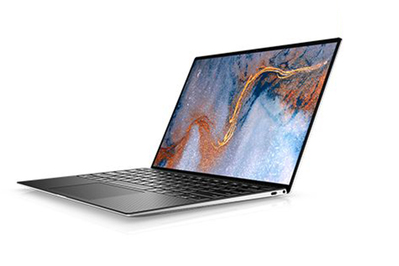

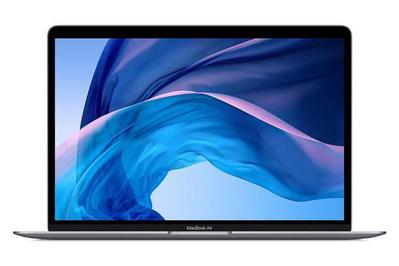

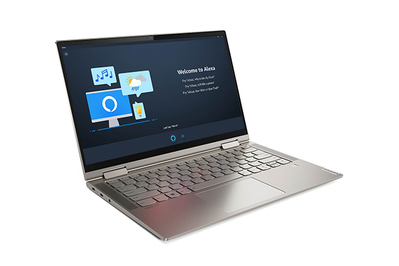

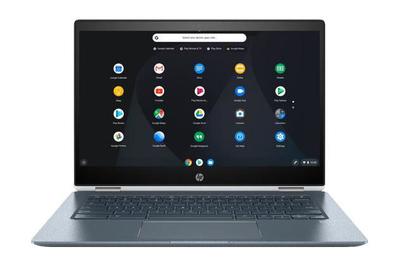

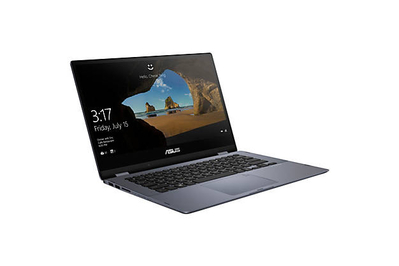



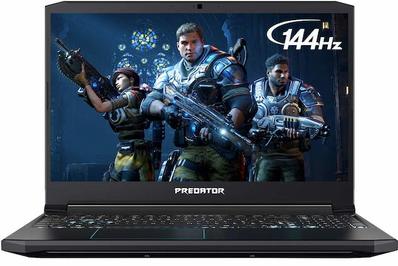



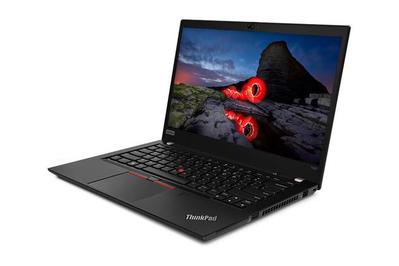

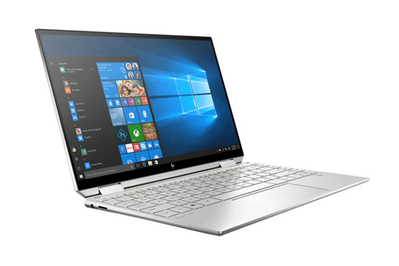

No comments:
Post a Comment
Note: Only a member of this blog may post a comment.